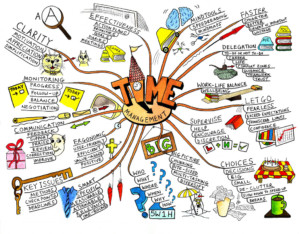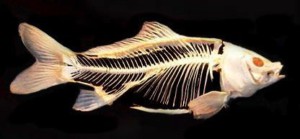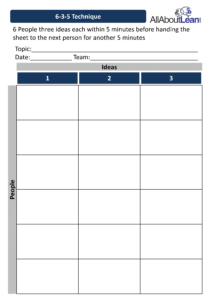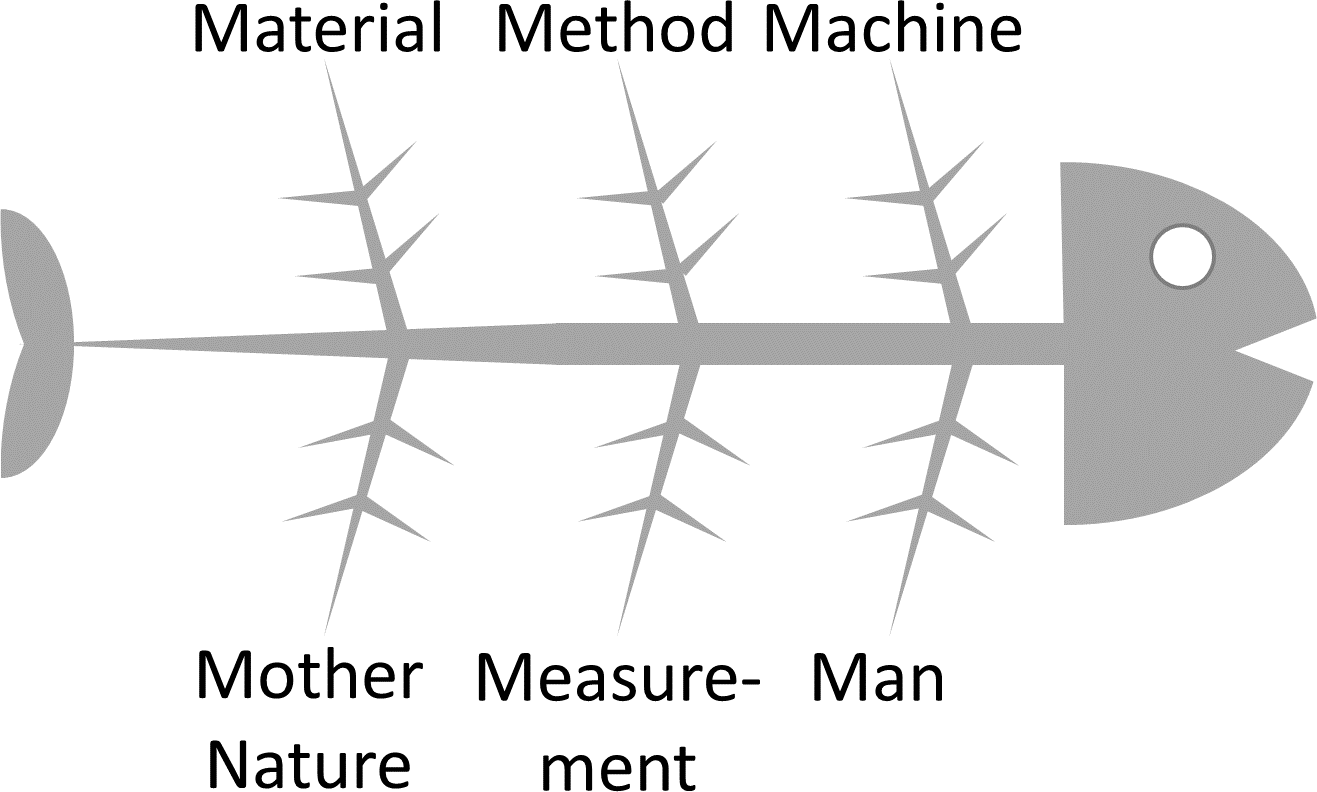 A lot of lean problem solving requires creativity. There are many creativity techniques available to help generate ideas for problem solving. In my last post I presented brainstorming, which is a freewheeling creativity technique. In this post I will show you some creativity techniques that have a more structured approach. These include mind maps and fishbone diagrams. Both can be used in groups, but they are also helpful if you need to tackle problems on your own.
A lot of lean problem solving requires creativity. There are many creativity techniques available to help generate ideas for problem solving. In my last post I presented brainstorming, which is a freewheeling creativity technique. In this post I will show you some creativity techniques that have a more structured approach. These include mind maps and fishbone diagrams. Both can be used in groups, but they are also helpful if you need to tackle problems on your own.
Fishbone Diagrams
 Let’s start with fishbone diagrams (also known as Ishikawa diagrams, if you prefer Japanese, although this is only the name of Kaoru Ishikawa and not a Japanese word).
Let’s start with fishbone diagrams (also known as Ishikawa diagrams, if you prefer Japanese, although this is only the name of Kaoru Ishikawa and not a Japanese word).
You can do this on your own or in a larger group. If you use a group, you should have a diverse group including different functions (see my post on brainstorming). If your group spans different levels of hierarchy or if there are conflicts among the team members, you may choose to have them write cards or give ideas in turn to mitigate the internal conflict.

You start with the problem, which would be the head of the fish. Starting from the head of the fish, you draw different bones, one for each category of issues that could affect the problem. There are quite a few options for these bones. Most common is man, machine, material, method (also known as 4M). But there are quite a few additional options:
- Man, Machine, Material, Method: Also known as 4M. The most common one.
- Man, Machine, Material, Method, Management, Milieu (Mother Nature), Measurement, Money: Also known as 8M, an expansion of the 4M. Various combinations exists for 5M or similar.
- Product (Service), Price, Place, Promotion, People/Personnel, Process, Physical Evidence: Another possible structure. This one is less focused on manufacturing and more focused on people and supply chain. Depending on your problem, you may not use all of the branches.
- Surroundings, System, Supplier, Skills, Safety: Yet another structure, again you may choose which ones you pick. This is also less focused on manufacturing and more on (inbound) logistics.
However, these are only suggestions. I have seen plenty of good fishbones not using any of these standard bones. The label on the bones has to make sense for your problem, and does not need to conform to the above structures!
Anyway, with this fishbone diagram, you create a structure using the different bones. Next, the group (or only you if you are on your own) try to find things that affect the problem through the different bones. This can be either in sequence, or you just add ideas as they pop into your mind. The overall approach is not that different from brainstorming, except for the underlying structure.
After generating ideas, you hopefully have a better picture of the cause of the problem. Next, you can sort these causes based on their significance and develop approaches to solve your problem.
Mind Map
You may have heard about this technique too. In a mind map, you try to structure your thoughts around a problem. This can also be done in a group, although I most commonly use this approach if I work on a problem on my own.
In the center of a large sheet of paper (on your own A4 [A3 is even better], flipchart, or whiteboard for larger groups), write down the problem you want to solve. Starting from this central problem, create branches in all directions based on thoughts and ideas you have about that problem. With the fishbone diagrams above, you used a predefined structure (4M, 8M, and so on). Now you have complete freedom about the structure. The branches and sub-branches don’t have to be general, but can be specific to your problem. There is software available for digital mind maps, but in my experience a paper-based mind map is usually much richer and more creative.
 To use a private-life example, when buying a house you could have “location,” “price,” “parking,” “floor space,” and so on. The branches can have sub-branches, sub-sub-branches, and so on. They could even loop together and form a connection with other branches again. When I am doing my own mind maps, I also like to use not only text but also draw doodles and use colors and highlighters to emphasize and visualize my ideas.
To use a private-life example, when buying a house you could have “location,” “price,” “parking,” “floor space,” and so on. The branches can have sub-branches, sub-sub-branches, and so on. They could even loop together and form a connection with other branches again. When I am doing my own mind maps, I also like to use not only text but also draw doodles and use colors and highlighters to emphasize and visualize my ideas.
After a mind map is sufficiently developed, it is again time to step back and start evaluating the ideas. Similar to brainstorming, do not under any circumstances evaluate ideas beforehand. Also prevent others from talking down the ideas. In almost any creativity technique, it is necessary to separate the idea generation from the idea evaluation.
Brainstorming Variants
There are also a few brainstorming variants. These provide a more formal approach while still following the basic idea of brainstorming. Personally, I find these a bit restrictive and overly formalized, and prefer the classical brainstorming over these forced variants.
6-3-5 Technique

The 6-3-5 technique is based on six people giving three ideas within five minutes on a sheet of paper before giving their sheet of paper to the next person and receiving a sheet from the previous person. In the next five minutes, they add three more ideas or expand on the three (or more) ideas above from the previous person. After thirty minutes, (six people with five minutes each), there should be 108 ideas on the paper.
You would need a preprinted sheet having three columns (for the three ideas) and six rows (one for each person). While the original method stipulates six people, it also works with slightly more or less than six. The original brainstorming rules still apply, and you should explicitly allow crazy ideas.
Fast Networking
 Another approach called fast networking is basically multiple brainstorming sessions in parallel, addressing different sub-problems of a larger and more complex problem. It is useful for complex problems that can be split into sub-problems, and also allows more people to join. Each subgroup includes three to five people, works for around five minutes on their sub-problem, and another five minutes on structuring and grouping of the possible solutions. Finally, the teams are presenting the results back to the main group, getting feedback and more ideas from the main group.
Another approach called fast networking is basically multiple brainstorming sessions in parallel, addressing different sub-problems of a larger and more complex problem. It is useful for complex problems that can be split into sub-problems, and also allows more people to join. Each subgroup includes three to five people, works for around five minutes on their sub-problem, and another five minutes on structuring and grouping of the possible solutions. Finally, the teams are presenting the results back to the main group, getting feedback and more ideas from the main group.
A very similar approach called “Gallery Walk” uses the approach of fast networking, but rotates the groups through the different problems. The rotation can be faster than with the fast networking, and teams can rotate every three minutes.
Summary
Overall, I find brainstorming very useful for me on my own, and the fishbones better for larger groups. The brainstorming variants are not that useful for me, but maybe you like it. The choice of a creativity technique is personal for each moderator, and some moderators prefer one while others prefer others. There are more techniques available, some of which I will present to you in the next post, where the moderator improves creativity by altering the initial question. This will include one of my favorites, creative provocation. In the meantime, map your mind, and organize your industry!



Apparently as you discussed there are a lot of techniques for solving the problems. I was wondering what is your idea regarding finding new opportunities. I mean sometimes finding a new opportunity would have more impact on organization than just focusing on solving current problems. Is there any systematic approach for finding new and creative opportunities ?
Thank you for your insightful posts.
Check the math…6 sheets with 18 ideas each (if my understanding is correct)???
Hi Stuart, thanks for the correction. 6 sheets with 18 ideas is 108, not 90 (somehow I was at 5 sheets with 18 ideas). I fixed it, and promise to work on my math skills 🙂